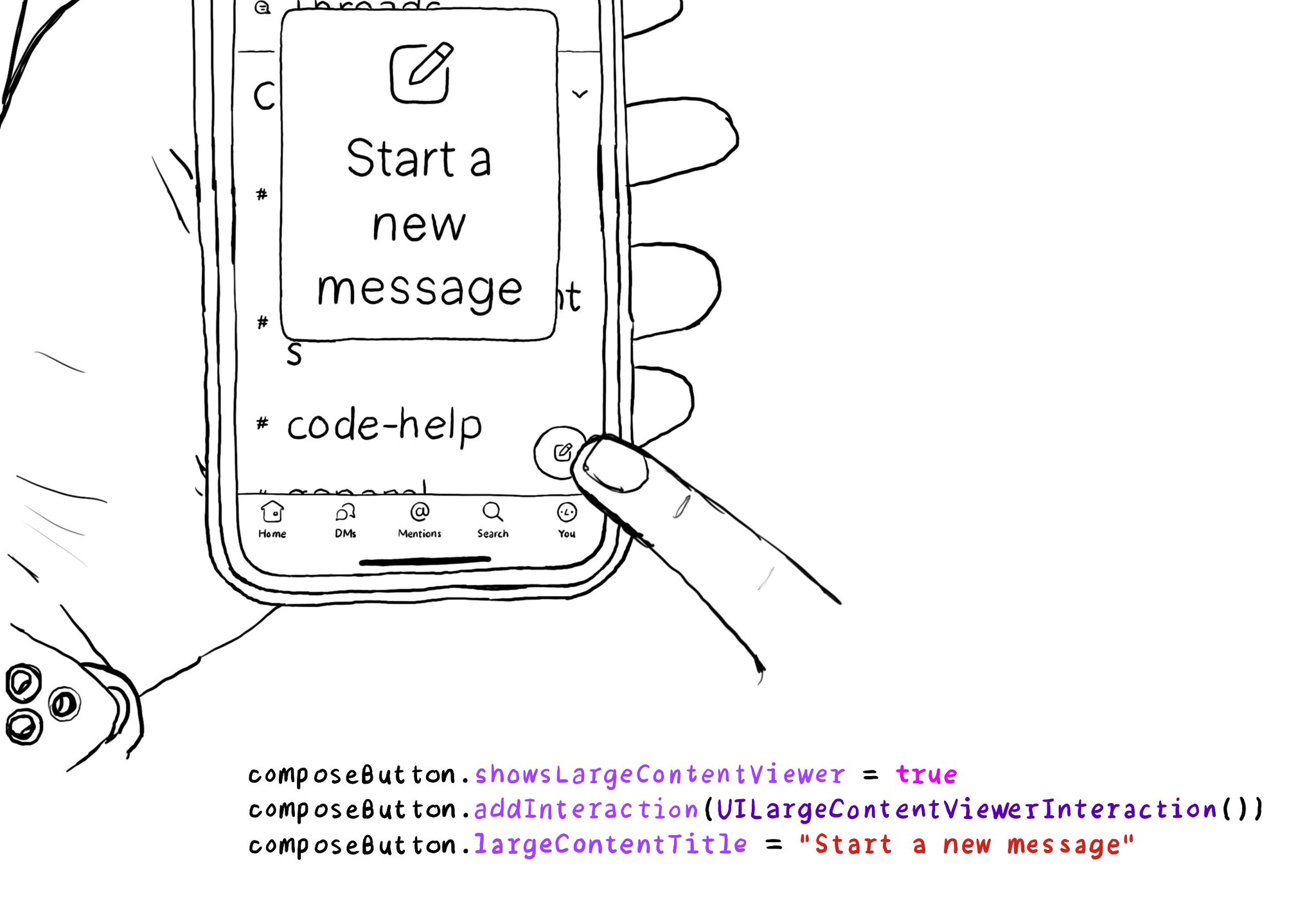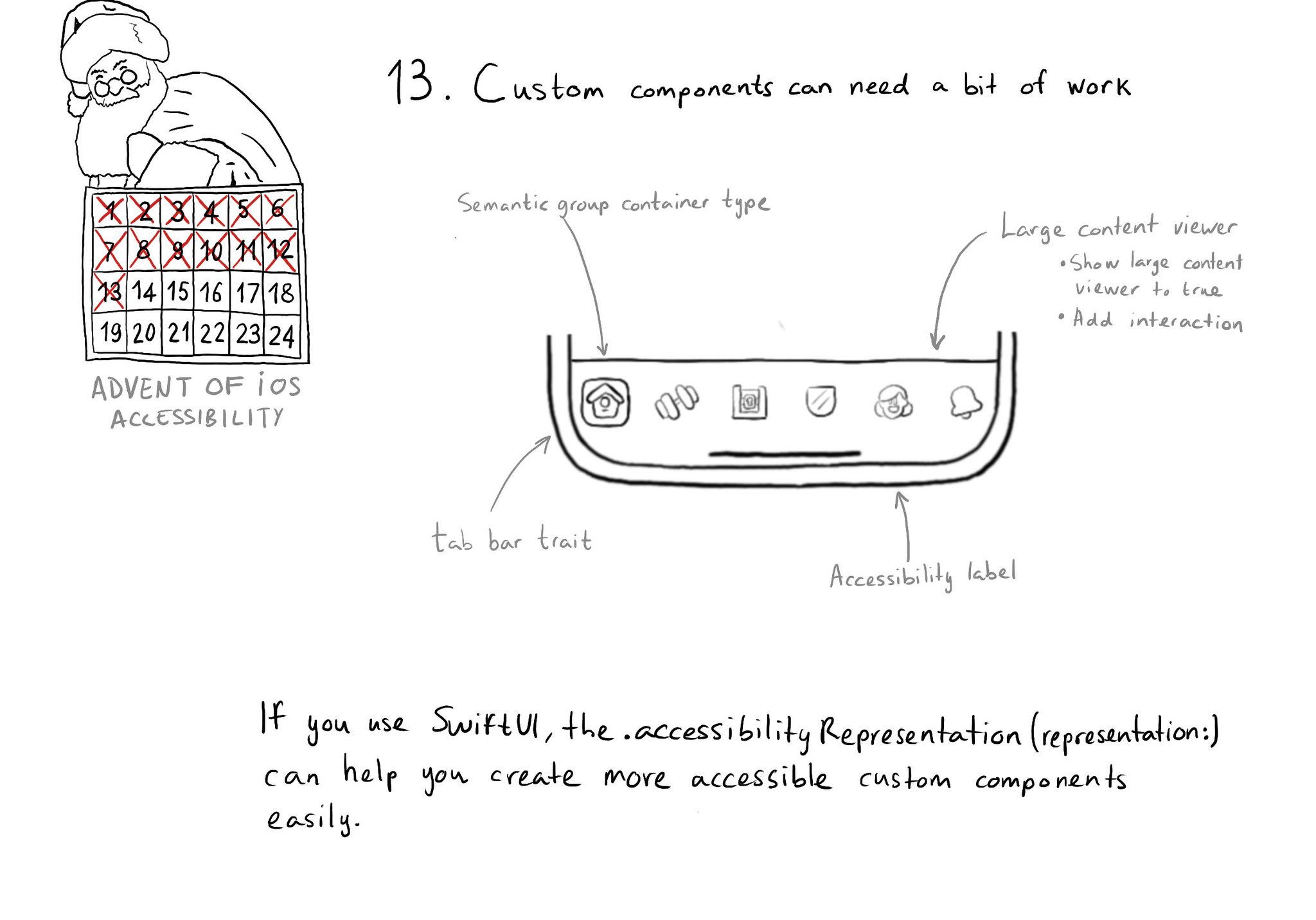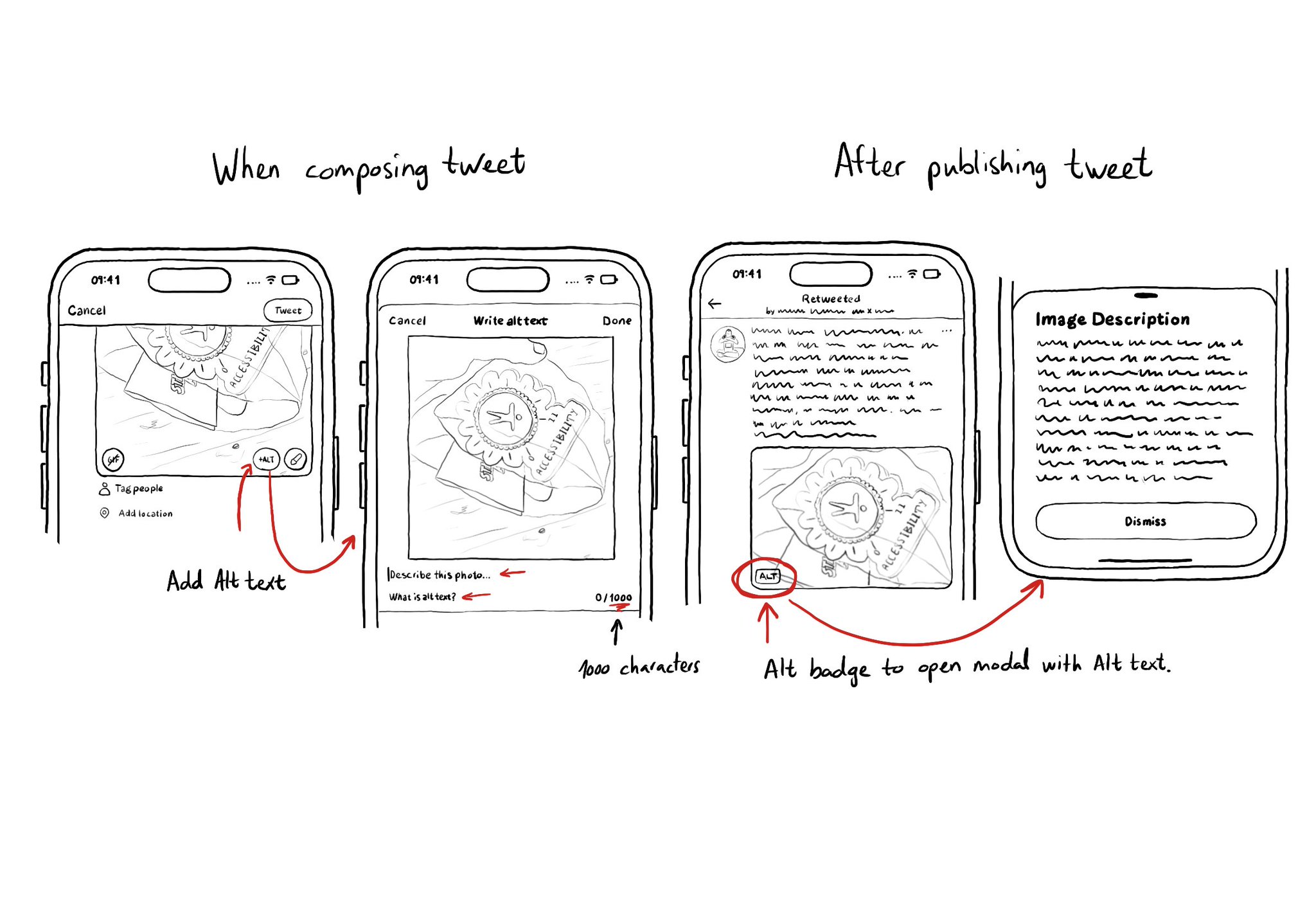When implementing the large content viewer, UIKit components will usually have a large content title and image configured for you. But if you are developing a custom component, or you want to add info to a native component, you can do so.

You may also find interesting...

Sometimes, you may want to create a custom component, even if there is a similar one in UIKit because you want to style it in a way that the default one won't let you. That's fine, just take into account that you'll need to make it accessible.
You should really try to support Dynamic Type. If you can’t for some reason, and you want to fall back to the Large Content Viewer, you can do so. I’d limit it to “sticky” bars. Maybe you have a custom tab bar, navigation bar, or similar? Check the UILargeContentViewerItem protocol. Most UIKit components conform to it already. You'll just need to set showsLargeContentViewer to true and add a UILargeContentViewerInteraction to your component. https://developer.apple.com/documentation/uikit/uilargecontentvieweritem

It is not just about applying accessibility APIs, but about caring, and thinking of features that can make your app more accessible and inclusive to everyone. Twitter's alt-text feature is a great example. Thanks, @TwitterA11y! You'll be missed.